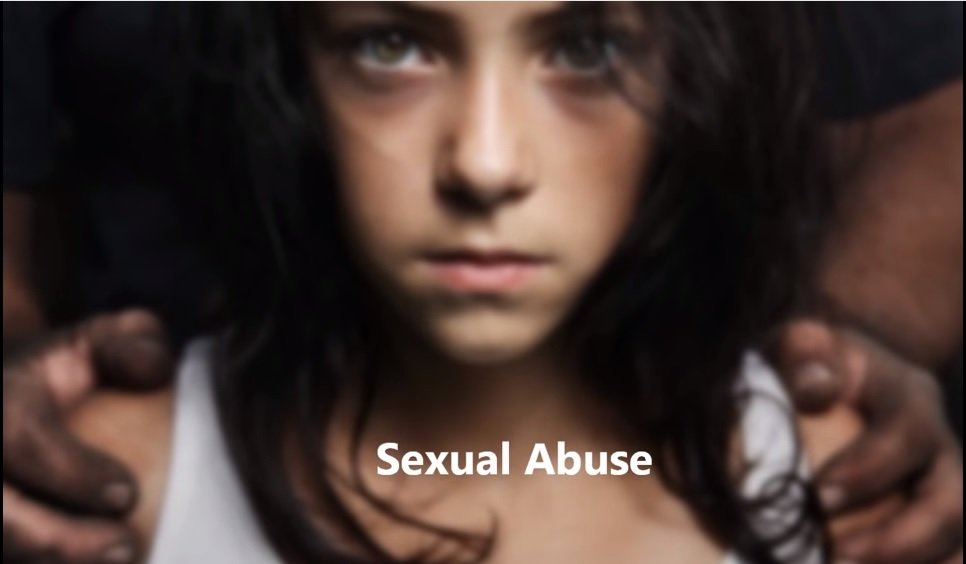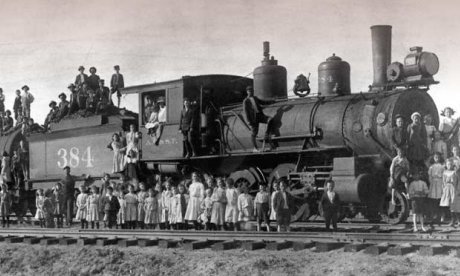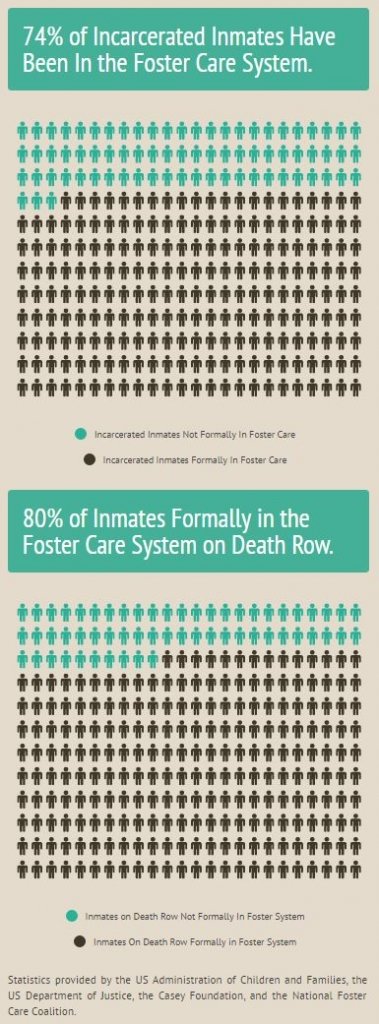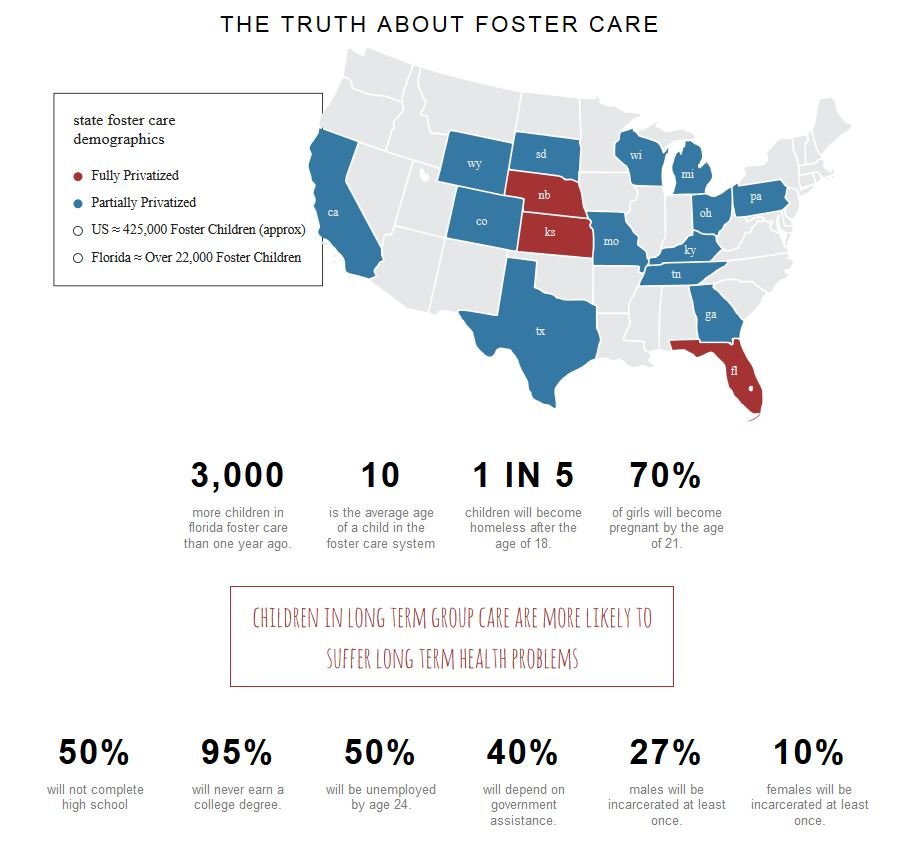May is National Foster Month, "Honoring, Uniting, and Celebrating Families." But is this really what foster care is doing? Theoretically, foster care provides a temporary loving, nurturing and safe home for children who are removed from their own families due to heinous neglect or abuse. This theory helps those involved in the system sleep good at night and feel like heroes.
Molly McGrath Tierney, the former Director of the Baltimore City Department of Social Services, gave one of the most insightful TEDx talks about the problems with the "Foster Care Industry" - an industry where children become a commodity that profits doctors, lawyers, judges, social workers, advocates, and other organizations, an industry that can only exist by taking other people's children, an industry that damages the very children it purports to be helping. She goes on to explain the trauma inflicted on children by the foster care industry, saying:
... we're digging a wound so deep, I don't believe we have a way of measuring it. This dismantling of families - it has enormous consequences. Kids that grow up outside of families - they don't master the things that can only be learned in that context, like who to trust, how to love, and how to take care of yourself, and that frankly does more damage than the abuse and neglect that brought the kid to my attention in the first place.
Currently there are over 415,00 children in foster care in the U.S. today, according to the 2014 Adoption and Foster Care Analysis and Reporting System (AFCARS).
What if you accepted that foster care was not a decision made "in the best interest of the child" but rather a financial decision made in the best interest of the state? What if you realized that the majority (75%) of children being removed from their home and placed into foster care was not due to imminent danger of abuse, but rather due to poverty, and are now being abused by the foster care system?
What if you acknowledged that many of the foster homes these children are being placed into are worse than the one from which they are removed? What if you learned about some of the stories of children who were abused in foster care, children who suffered emotional trauma from being "kidnapped" from their home, forced to take psychotropic drugs for the resulting emotional traumas they endured, physically, emotionally and sexually abused, or even used in sex-trafficking rings?
Comment: Read more about the drugging of foster children in America:
- US States Drug Foster Kids to Death
- Drugging foster kids shows more neglect
- Another Prescription Drug Abuse Problem: The Overmedication of Foster Kids
- Shocking Reports of Overmedicated Foster Children Force Government Review
- Foster Children Given Harmful Antipsychotics and Tranquilizers as Frequently as Mentally Disabled
What would you do with this information?
In the short video below, former foster child, Lydia Joyner, shares about her traumatic experience growing up in foster care. By the time she was 18 years old, Lydia had lived in 35 different homes, had 18 social workers, and her name was changed 4 times.
YouTube Video: Former Foster Child Shares Her Story: My Sky Is Falling.
Poverty Creates a Commodity of Children
Seventy-five percent of children being removed from their homes is due to "neglect." But are children really being neglected, or is it the "opinions" of social workers that these children were being deprived intentionally of necessities of "adequate" food, clothing, shelter, medical care, or supervision, when in fact, the family was just poor?
The National Coalition for Child Protection Reform (NCCPR), writes in Who is in "The System" - and Why
Out of every 100 children investigated as possible victims of abuse, three are 'substantiated' victims of all forms of physical abuse, from the most minor to the most severe, about two more are victims of sexual abuse. Many of the rest are false allegations or cases in which a family's poverty has been confused with neglect. Source.Regarding poverty as a reason for child placements, Mary Callahan, former foster parent and author of Memoirs of a Baby Stealer: Lessons I've Learned as a Foster Mother, said in a recent article, Poverty's Link to Foster Care Removals? It's in The Eyes Of The Workers:
I didn't get it. I started asking the workers why they were removed over things so minor.Orphan Trains, the Forerunner to Foster Care
One worker said, 'There's a difference between them and us,' as if that explained anything. Another said, 'Don't worry about it. Those parents are the dregs of humanity.' As I started meeting the parents, I actually liked most of them. I didn't find them to be the dregs of humanity.
The biggest difference I found between them and me was that they were poor. So, it seemed to me, the children were taken because of poverty. Source.
History repeats itself, especially if money can be made. Charles Loring Brace, founder of the New York Children's Aid Society, conceived the "orphan trains" as a way to "salvage poor immigrant children," moving them off the streets of the city and into "loving" homes in the country, sending them by trains to live with families who were complete strangers.
Brace was an evangelical reformer who wished to remove the children of poor Catholics from crowded urban and family environments and place them in Anglo-Protestant farming families in small towns and rural areas. Brace and his peers considered Catholic parents unworthy almost by definition, but the philosophy of child rescue also emphasized nurture over nature.Modern-day foster care got its origins from the "orphan trains" of the mid-1800's, the concept of moving "poor children" into "more worthy" homes. One of the main differences between the recipients of orphan train children and foster care today is that nowthese "loving foster families" get paid to take in these "poor children" by way of federal tax dollars.
Malleable and innocent children, if removed early enough from depraved parents, could escape the inferior culture inherent in their homes and communities and become upstanding citizens. Not surprisingly, an ideology that seemed benevolent and humanitarian to many Protestants earned Brace a reputation in Catholic communities as a child-stealer rather than a child-saver. Source.
Between 1854 and 1929, as many as 250,000 children from New York and other Eastern cities were sent by train to towns in Midwestern and western states, as well as Canada and Mexico. Families interested in the orphans showed up to look them over when they were placed on display in local train stations, and placements were frequently made with little or no investigation or oversight.Although the children were supposed to be "treated as family members," many of these children ended up as indentured servants. Some families could even pre-order children with certain traits. (Watch short video below.)
Reformers like Brace were determined to salvage the civic potential of poor immigrant children by placing them in culturally 'worthy' families while simultaneously reducing urban poverty and crime and supplying some of the workers that western development required. Source.
You Tube Video: The Orphan Trains.
Studies Show Children are Worse Off in Foster Care
The evidence continues to shine the light on the grim outcomes of foster care.
In 2007 Joseph Doyle, an economics professor at MIT's Sloan School of Management, published a study which tracked at least 15,000 kids from 1990 to 2002. It was the largest study of its kind at that time.
USA Today ran a story on the report - Study: Troubled homes better than foster care. Here are some excerpts:
Children whose families are investigated for abuse or neglect are likely to do better in life if they stay with their families than if they go into foster care, according to a pioneering study. Kids who stayed with their families were less likely to become juvenile delinquents or teen mothers and more likely to hold jobs as young adults.USA Today highlights some of Doyle's findings:
Doyle's study.... provides 'the first viable, empirical evidence' of the benefits of keeping kids with their families, says Gary Stangler, executive director of the Jim Casey Youth Opportunities Initiative, a foundation for foster teens. Stangler says it looked at kids over a longer period of time than had other studies. 'It confirms what experience and observation tell us: kids who can remain in their homes do better than in foster care,' says Stangler. Read the full study here.
Children who stay in troubled families fare better than those put into foster care. Those who:Joseph Doyle did another study, one year later in 2008, comparing children left in troubled homes with foster care children to see which group was more likely to be arrested as adults. The study looked at 23,000 children, and it found that "children placed in foster care have arrest, conviction, and imprisonment rates as adults that are three times higher than those of children who remained at home." Read the full study here.
Were arrested at least once:
- Stayed with family: 14%
- Went to foster care: 44%
Became teen mothers:
- Stayed with family: 33%
- Went to foster care: 56%
Held a job at least 3 months:
- Stayed with family: 33%
- Went to foster care: 20%
In another article, National Coalition for Child Protection Reform (NCCPR) shares some case histories of children who were abused in child care, proclaiming:
But in the name of 'child protection' children have been beaten. In the name of 'children's rights' children have been raped. And in the name of 'erring on the side of the child,' children have been murdered. These are the stories of some of those children. Source.The short video below asks whether foster care is a form of neglect, saying, "When you think about foster homes, usually you think of them as nice places, families helping out children and providing them a safe and comforting home. However, that's not always the case. More often than you think, children are being abused in these homes."
YouTube video: Child Abuse in Foster Care. A video raising awareness to the abuse of children in foster homes.
Toxic Stress and Drugging Children for Profit
Toxic stress response can occur when a child experiences strong, frequent, and/or prolonged adversity—such as physical or emotional abuse, chronic neglect, caregiver substance abuse or mental illness, exposure to violence, and/or the accumulated burdens of family economic hardship—without adequate adult support. This kind of prolonged activation of the stress response systems can disrupt the development of brain architecture and other organ systems, and increase the risk for stress-related disease and cognitive impairment, well into the adult years. Source.In the article, Family Preservation is Safer Than Foster Care, the National Coalition for Child Protection Reform (NCCPR), declares:
The failings of America's child welfare system can be summed up by the very rationalization often used to justify the way it works today, an approach that can be boiled down to 'take the child and run.' You've probably heard it many times: Sure adults may suffer when their children are needlessly taken away, but, it is claimed, we have to 'err on the side of the child.' In fact, there probably is no phrase in the child welfare lexicon that has done more harm to children than 'err on the side of the child.'There is a financial benefit for the state to label children as "special needs" and "prescribe" them drugs. Katie Rucke reports in America's Foster Care System: Test Lab for Big Pharma, Cash Cow for Caretakers?
When a child is needlessly thrown into foster care, he loses not only mom and dad but often brothers, sisters, aunts, uncles, grandparents, teachers, friends and classmates. For a young enough child it can be an experience akin to a kidnapping. Other children feel they must have done something terribly wrong and now they are being punished.
One major study of foster care 'alumni' found they had twice the rate of post-traumatic stress disorder of Gulf War veterans and only 20 percent could be said to be 'doing well.'
How can throwing children into a system which churns out walking wounded four times out of five be 'erring on the side of the child'? Source.
Of the more than 400,000 children in the U.S. foster care system, it's estimated that more than 50 percent are on some sort of psychiatric drug.YouTube video: Psychiatry Drugs Foster Care Children - Montage. Montage of interviews with seven foster care alumni.
Money is part of the reason. Foster parents are paid more to take care of a child with mental health issues.
On average, a foster family earns about $17 a day for taking in a child who needs a basic level of care. But a child who is taking drugs such as antidepressants, antipsychotics, mood stabilizers, anxiety medications or anticonvulsant medications is worth around $1,000 a day.
And foster parents are not responsible for paying for the medicines, either, as they are covered by Social Security.
Many child and human rights advocates are concerned about the dramatic number of children who are classified as 'special needs' after entering the foster care system. One reason doctors, psychiatrists and therapists may not be speaking out against the unnecessary drugging of these children is because those who prescribe the drugs often benefit financially, receiving big payouts from pharmaceutical companies. Source.
Nehemiah Flynt, a former foster parent, adds:
They have an agenda to medicate as many children as they can, to label them with mental health disorders, and to stop anyone who stands in their way - at any cost. Source.The Citizens Commission on Human Rights (CCHR) offers a search engine to check the side effects of drugs available here.
And how many children in foster care are being used in drug trials and experimentation? Without parents in the way, the state has access to unlimited "guinea pigs" and with no accountability.
Gloria Wright, from Ablechild.org, comments:
As a grandparent and a member and officer of Ablechild, a 501(C) 3 organization, I wish to bring to your attention our cry for the protection of human rights of foster children across America!
Our organization frequently hears from parents across the nation who implore us for assistance in the matter of the clinical trial/experimental drugging of their children while in state custody and in foster care. These children have been placed on clinical trial drugs without a legal advocate responsible for safeguarding their health, or their life. As minors these children are unable to opt out of these tests/experiments, the parents have been denied their right to dissent and there obviously are no procedures in place to safeguard the rights of the children. Source.







was perhaps learning disabled when I got him at 3 and he got from me all the love I had to give, direction, care, teaching, protection for 5 years. I will always be feel blessed that the state was not able to interfere with those 5 years. Lucky, lucky Daniel.